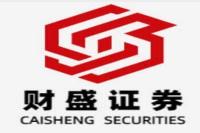Robotaxi: The Future of Transportation is Here, But is it Ready?
Meta Description: Discover the latest developments in Robotaxi technology, explore its potential impact on the transportation industry, and learn about the key players shaping this revolutionary market.
The buzz around Robotaxi, or autonomous ride-hailing services, has reached a fever pitch. Headlines about companies like Baidu's "RoboTaxi" and Tesla's delayed launch have ignited a spirited conversation about the potential for self-driving cars to revolutionize transportation. While some see this as the "iPhone moment" for autonomous vehicles, others remain cautious about its widespread adoption. So, what's the reality? Is the future of transportation truly driverless?
This article dives deep into the exhilarating world of Robotaxi, breaking down the key advancements, highlighting the challenges, and examining the major players vying for dominance in this burgeoning market. We'll explore the potential for Robotaxi to become a mainstream mode of transport, and whether this technology is poised to transform how we move around our cities, and even the world.
The Dawn of Commercialization: Robotaxi's Second Act
The Robotaxi industry isn't exactly a newcomer. Waymo, Google's self-driving car division, pioneered commercialization back in 2018 with its paid service, Waymo One. However, the initial excitement quickly cooled as technical hurdles and shaky business models prevented wider adoption.
The year 2022 saw a significant chill in the industry, with investment drying up and stock prices plummeting. But, a recent surge in activity has reignited hope for Robotaxi's success.
Baidu's "RoboTaxi" service in Wuhan, China, has been making waves, with impressive operational data. Their fleet has achieved peak daily orders exceeding 20, and the public's response to fully autonomous rides has been overwhelmingly positive. Baidu is aiming for city-wide coverage in Wuhan by 2024, with plans to deploy 1,000 new, fully autonomous vehicles for 24/7 operation. Industry experts predict that a fleet of 1,000 vehicles in a single city is the tipping point for Robotaxi profitability.
Other contenders, including Pony.ai, AutoX, DiDi Chuxing, and Raxi, have also made strides, showcasing a growing ecosystem of players pushing the boundaries of autonomous mobility. Pony.ai, for instance, envisions achieving a similar scale in major cities like Beijing, Shanghai, Guangzhou, and Shenzhen by 2025-2026.
The consensus among industry insiders is that large-scale commercialization of Robotaxi is within reach within the next five years. McKinsey predicts a staggering $260 billion market for autonomous ride-hailing services by 2030, soaring to an estimated $940 billion by 2040. These figures underscore the vast potential of this emerging market and its potential to reshape the global transportation landscape.
Beyond Ride-Hailing: The Rise of Autonomous Commercial Vehicles
Robotaxi is just one facet of the broader autonomous vehicle revolution. While navigating bustling city streets presents unique challenges, commercial vehicles like trucks and delivery vans are seeing faster adoption in controlled environments.
The success of autonomous commercial vehicles hinges on a three-pronged approach: technology, policy, and application. China boasts a significant advantage in the application domain, with its massive market providing ample opportunities for testing and deploying autonomous solutions. This is particularly true for enclosed spaces like industrial parks and factories, where consistent conditions and simpler routes make automation more achievable.
The integration of advanced technologies like big data, the Internet of Things (IoT), and large language models is further accelerating the adoption of autonomous vehicles in logistics. This synergy is driving significant improvements in efficiency and service quality within the logistics industry.
Companies like Holoma, a subsidiary of Great Wall Motors, are leading the charge in this segment. Their autonomous delivery vehicle, "Xiao Mo Tuo," is already commercially operational in multiple sectors, including grocery delivery, courier services, campus deliveries, airport patrols, and even food retail. Notably, Holoma achieved profitability in the grocery delivery segment during the fourth quarter of 2023.
Friendway Intelligent, a leading player in autonomous truck technology, was recently selected for China's first autonomous truck pilot program. Friendway's fleet can already operate fully autonomously in enclosed environments like industrial parks, ports, and steel mills. This technology has proven its worth, with a team of just three managers effectively overseeing a fleet of dozens of trucks, generating over 10 million yuan in monthly revenue.
Friendway's CEO, Wang Rui, believes that autonomous commercial vehicles will outpace their passenger counterparts, citing the lower cost sensitivity of commercial operations. The potential cost savings from replacing multiple human drivers with automation outweigh the initial investment, making the business case more compelling.
The Winners and Losers: Who Will Benefit from the Autonomous Revolution?
The race to dominate the autonomous vehicle market is attracting players from various sectors, each with its own unique strengths. From traditional automakers to tech giants, the industry is poised for a dynamic, multi-faceted future.
No discussion about Robotaxi can ignore Tesla. Its Full Self-Driving (FSD) technology is considered a landmark achievement, signifying the arrival of a technical turning point for both Robotaxi and autonomous vehicles.
The automotive landscape is witnessing a diverse array of players, ranging from established names like SAIC Motor and Geely to up-and-coming players like NIO, XPeng, and Li Auto. Additionally, "Huawei-backed" companies like Changan, Seres, Chery, and JAC are making significant strides in the autonomous vehicle space.
Beyond the automakers, industry giants like Baidu with its Apollo platform, Horizon Robotics, DJI, and Momenta are leading the development of cutting-edge autonomous driving solutions. Traditional automotive component suppliers like Bosch are also playing a critical role in this transformation.
The future of autonomous driving will likely involve a shift in the power dynamics within the automotive industry. If car manufacturers choose to offer autonomous services directly, they could establish closed-loop ecosystems similar to Tesla's current model. This would allow them to sell more vehicles and command higher profits. Conversely, if third-party providers dominate the autonomous ride-hailing market, their influence will grow significantly.
Looking at the upstream components, the industry can be segmented into perception, decision-making, and execution layers. In the perception layer, companies like Velodyne and Hesai Technology are notable players in the LiDAR (Light Detection and Ranging) market. The decision-making layer is dominated by chipmakers like Qualcomm, NVIDIA, NXP, and Infineon, as well as mapping providers like Baidu, AutoNavi, and NavInfo. The execution layer, the foundation of autonomous driving, is largely controlled by traditional automotive component suppliers like Bosch and Continental.
Baidu: A Visionary Leader in Autonomous Driving
Baidu, one of the earliest adopters of autonomous vehicle technology, is often referred to as "China's autonomous driving academy." Its founder, Robin Li, has been a strong proponent of this technology for over a decade, envisioning a future where autonomous vehicles become the norm.
In his book, "Intelligent Transportation," Li argues that autonomous vehicles equipped with numerous sensors are safer, comply with traffic regulations, improve road efficiency, alleviate congestion, and offer a greener, more sustainable alternative to traditional cars. He boldly predicts that autonomous vehicles will become the dominant mode of transportation in the future.
Frequently Asked Questions about Robotaxi:
Q: Is Robotaxi safe?
A: Safety is paramount in autonomous driving. Extensive testing and rigorous safety protocols are being implemented to ensure the reliability and security of Robotaxi services. While advancements are being made, the technology is still evolving, and continuous research and development are crucial for ensuring a high level of safety.
Q: Will Robotaxi replace human drivers?
A: While Robotaxi is poised to disrupt the transportation industry, it's unlikely to completely replace human drivers in the near future. There will likely be a coexistence of human-driven and autonomous vehicles, with each fulfilling specific roles and catering to different needs.
Q: What are the potential benefits of Robotaxi?
A: Robotaxi promises numerous benefits, including enhanced safety, reduced traffic congestion, increased accessibility for those who cannot drive, and reduced carbon emissions. It also presents new opportunities for employment in areas like autonomous vehicle engineering, maintenance, and operations.
Q: What are the challenges facing Robotaxi deployment?
A: Challenges include the need for further technological advancements, addressing legal and regulatory frameworks, ensuring public acceptance and trust, and developing robust business models that are both profitable and sustainable.
Q: How can I get involved in the Robotaxi industry?
A: There are various ways to contribute, from pursuing careers in autonomous vehicle engineering, software development, or data analysis to supporting companies developing this technology. You can also advocate for policies that foster the development and deployment of autonomous vehicles.
Conclusion: A Future Driven by Innovation
The Robotaxi revolution is upon us, and its impact will be far-reaching. While challenges remain, the industry is moving forward with incredible momentum, driven by technological innovation, government support, and the growing demand for safer, more efficient, and sustainable transportation solutions. The future of transportation is likely to be a blend of human and autonomous vehicles, as we navigate towards a more connected and intelligent world.



